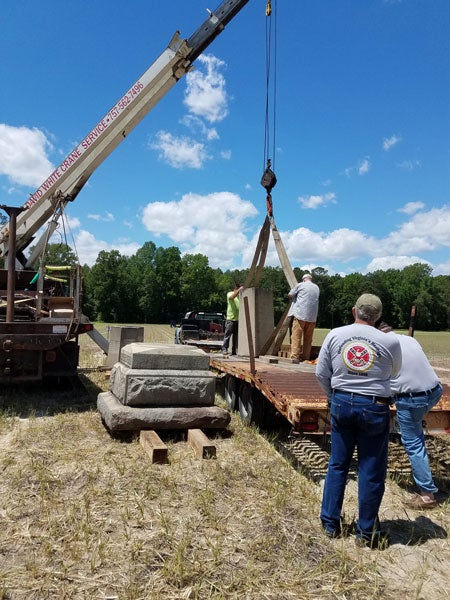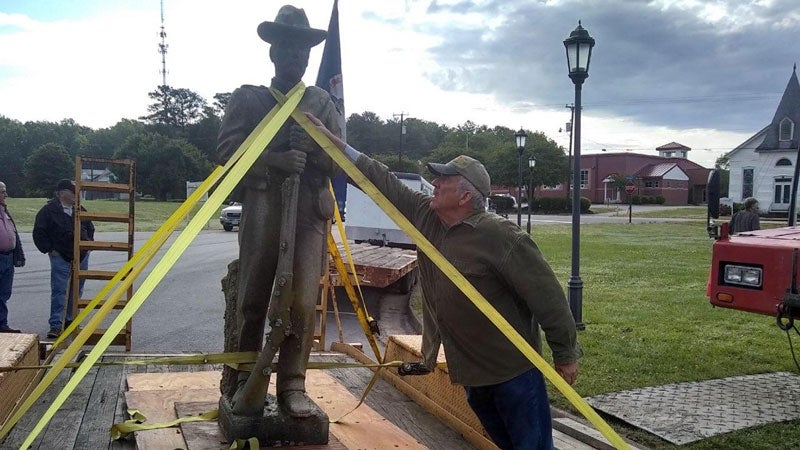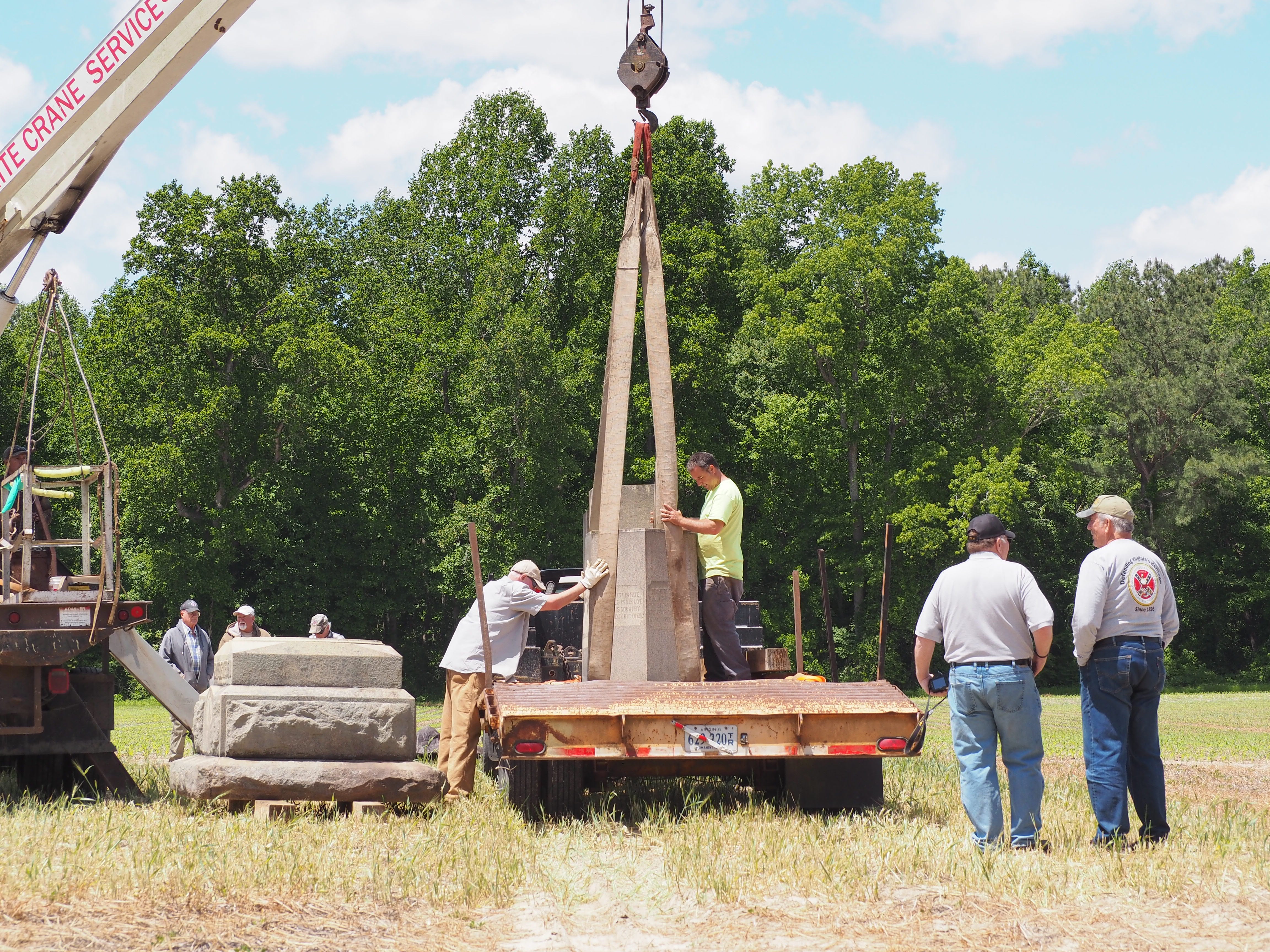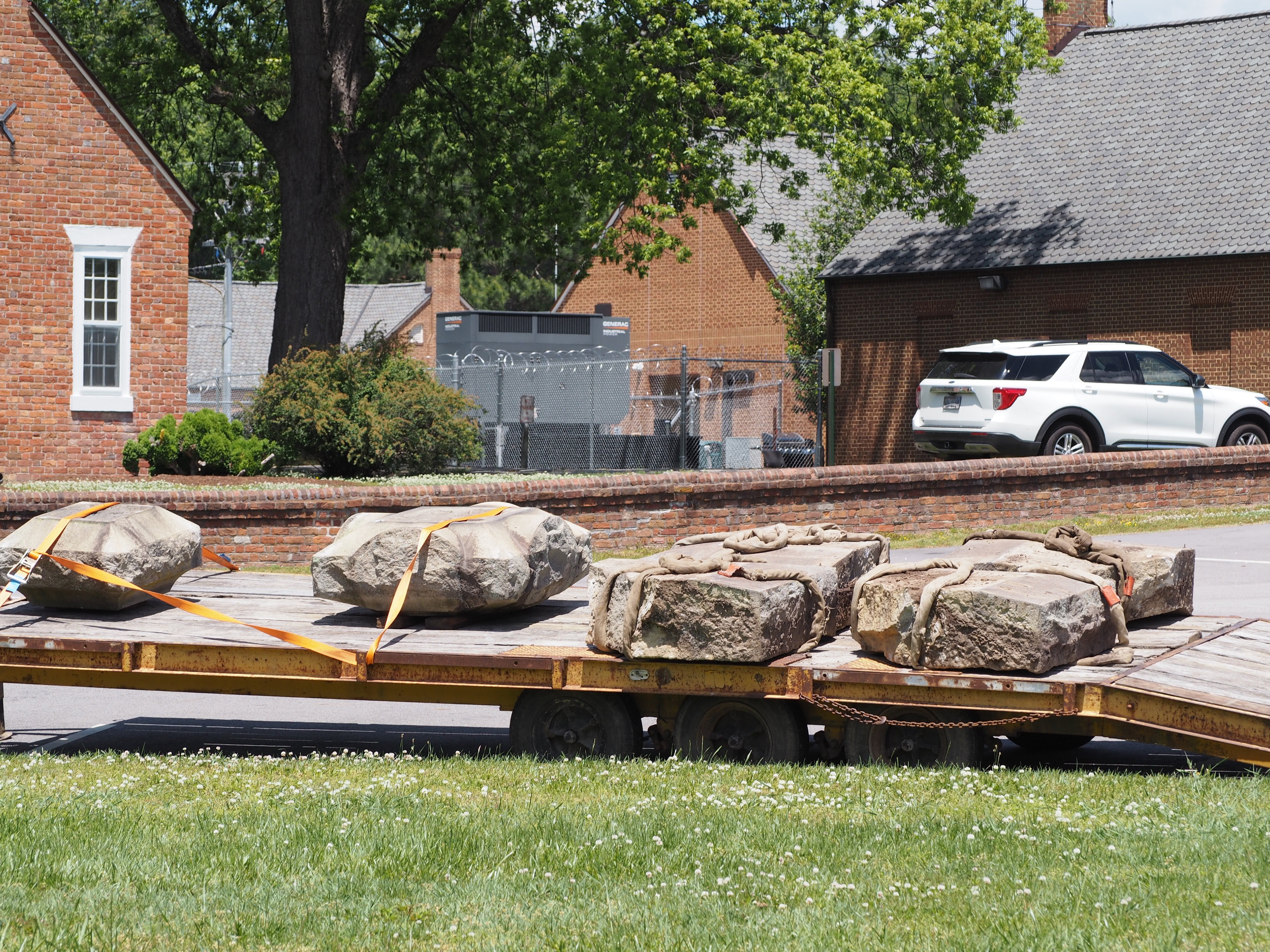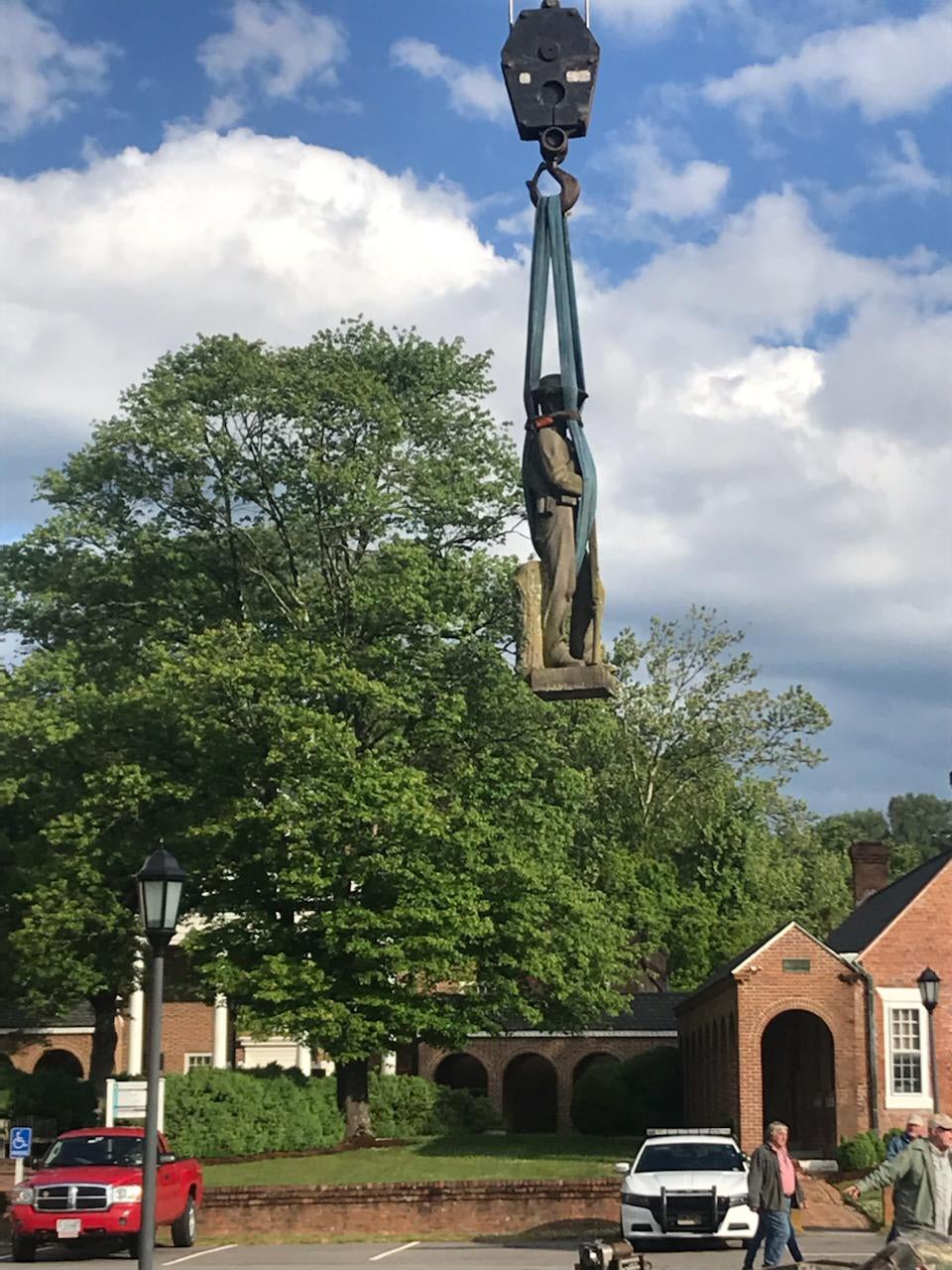Confederate monument removed from county land
Published 3:27 pm Saturday, May 8, 2021
|
Getting your Trinity Audio player ready...
|
Editor’s note: This story was originally published May 8 and updated at 3:50 p.m. May 10 with additional statements from Volpe Boykin, Valerie Butler and Assistant County Administrator Don Robertson.
ISLE OF WIGHT
By about 12:45 p.m. Saturday, a circular patch of dirt outside Isle of Wight County’s courthouse complex near its three flagpoles was the only remaining evidence that a Confederate monument had stood there for the past 115 years.
That, and a flatbed trailer parked on Monument Circle carrying the granite slabs that once formed the statue’s base.
The rest of the monument now stands in pieces in the middle of a farm field along Walters Highway owned by Volpe Boykin.
Boykin and his wife, Jennifer, were the only ones to submit a proposal during the state-mandated 30-day window for museums and organizations to express an interest in taking the monument, following the Board of Supervisors’ Feb. 18 vote to relocate it.
Prior to the removal date, Boykin had emailed the county government, stating he had done his best to keep the date secret and had notified no media representatives.
“If they are present, it will not be because I want them,” he wrote.
In that same email, he specifically objected to the request of Valerie Butler, president of the county’s local NAACP chapter, to attend, stating her presence and that of others “that may want to celebrate can do nothing but cause problems.”
But Butler, who showed up anyway that morning, said she’d already learned of the date several weeks ago from Assistant County Administrator Don Robertson and Hardy District Supervisor Rudolph Jefferson.
She’s been leading the NAACP’s push to have the monument moved since 2017, before state law changed in 2020 to allow localities to remove, relocate, cover or add signage contextualizing their monuments.
“It was a little emotional,” Butler said. “Today is a new season and a historic moment in Isle of Wight County. I never thought I would see this day.”
On Facebook, Butler commented that she’d been frightened and had remained in her car to take pictures for a few moments upon her arrival, but then saw some of her friends, stepped out, and continued photographing the event. But Boykin wrote in an email that all he said to her was, “Good morning.”
Robertson, in an email to The Smithfield Times, acknowledged concerns by both Butler and Boykin.
“I understand Ms. Butler’s apprehension to physically show up for the removal of the monument in the context of the things that have transpired in our community historically and recently,” Robertson said. “She has become the ‘face’ of the NAACP in Isle of Wight County and that, in and of itself, means that she will not be welcome in many circles. Her fear is not without foundation and should not be dismissed.”
Boykin said he’d wanted no spectators for “safety reasons” and because he “didn’t want a circus.”
“We didn’t want people in the way; we wanted to get in and get out,” said Boykin, clad in a Sons of Confederate Veterans T-shirt emblazoned with its Virginia division’s logo – a variant of the state “Sic Semper Tyrannis” seal atop a Confederate battle flag.
“To us, this is the same as exhuming a grave and relocating it, so it should be done in an honorable, quiet and quick fashion,” Boykin said.
With him, supervising the unloading of the monument on his farm field was Ed Whitley, commander of the Isle of Wight Avengers, the county’s Sons of Confederate Veterans chapter.
“I also understand Mr. Boykin’s concerns that the removal of the monument be conducted solemnly and respectfully,” Robertson wrote. “He has invested his time and his personal property in attempting to resolve the matter of where to locate the monument. He has become the ‘face’ of those supporting the monument and I am sure that comes with its risks as well. His desire to move the monument without fanfare or disruption is reasonable and should be respected.”
County residents who had lobbied for the monument’s removal from county grounds argue it glorifies the Confederacy and white supremacy. Others who had lobbied for it to remain where it stands are of the opinion that removing it would be tantamount to erasing history.
“I am hopeful that what the monument symbolized – white supremacy, oppression and racism to the Black community – that the absence will be a beginning for progression and open dialogue,” Butler said.
Per the terms the county agreed to April 15, it will pay Boykin $32,500 for the cost of moving the statue to his farm field. There, he plans to construct a private park where people can view the monument.
“We’ve had a lot of citizens already donate money … just like the monument was originally financed by the citizens of Isle of Wight,” Boykin said.
A group known as the Isle of Wight Monument and Memorial Association, Boykin said, had helped finance the erecting of the monument in 1905, one of whom was an ancestor of Boykin’s and another, an ancestor of his wife. It’s one of many the United Daughters of the Confederacy commissioned throughout the early to mid 20th century.
“It’s kind of ironic that we end up with the monument,” he said.
His plan is to form a new group under that same name to eventually hold title to the monument and an easement so that the monument can remain on the Boykin property in perpetuity.
“It’s going to have a small number of members; the youngest one, I believe, is 23,” Boykin said. “My wife and I will maintain control over what happens at it for as long as we’re alive.”
Boykin has already marked where on the property the monument will stand.
“It will be placed in a prominent visible location on a main highway that runs through the county where no expense in time and funds will be spared to make it the respected place it should be to honor soldiers that sacrificed their lives as ordered by the government they lived under,” Boykin added via email.
In the event the monument is vandalized at its new home, he’s also offering a reward up to $10,000 to anyone who turns in the vandals, upon arrest and successful conviction of the perpetrators.
“No one has complained to myself at all and I’ve gone to the immediate landowners and asked their objections,” he said.
Some time after the monument had moved from the courthouse complex, one or more unidentified people placed miniature Confederate flags around the dirt patch where it stood. Boykin said he didn’t know the identity of the flag placers.
“If I did, I would have expressed my displeasure at that gesture,” he said. “No call for that.”
Robertson said the flags have since been removed. He also doesn’t know who placed them there, but “we are looking into it,” he said.
The county has no plan for the dirt patch where the monument once stood.
“As an interim step we will likely do some landscaping and relocate the lights that were on the monument,” he said.


